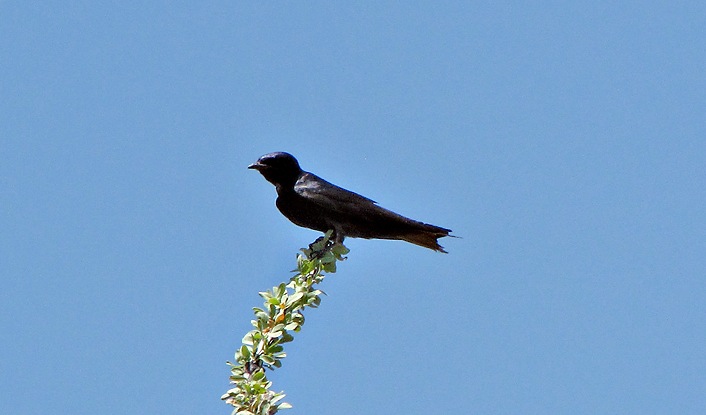
With their amazing acrobatic movements, highly social behavior and boisterous chirps, Purple Martins are beloved and sought after backyard birds.
Even though you may have seen those tall Purple Martin houses everywhere (including possibly your own backyard), there’s a lot about Purple Martins you probably didn’t know. So, we’ve compiled a list of the 10 most interesting facts about these beautiful swallows.
1. The tradition of putting up Purple Martin houses and plastic gourds is nothing new. In fact, it can be traced back centuries when Native Americans would hang real hollowed-out gourds to attract the birds either for the joy of watching Purple Martins or to keep insects away from their crops. This caused a shift in the Purple Martin housing behavior, which is why all Purple Martin colonies in the eastern parts of the US are dependent on man-made housing.
2. The Purple Martin is the largest swallow in North America.
3. Despite the widespread claim that a single Purple Martin eats 2,000 mosquitoes a day, it has been proven false. Purple Martins actually eat very few mosquitoes (if any) because they feed relatively high above the ground—well above where mosquitoes are prevalent.
4. Similar to how Blue Jays aren’t actually blue, Purple Martins aren’t actually purple. Instead, they have dark iridescent plumage that can look different depending on the light.
 5. Purple Martins not only eat insects while flying but they also drink water that way. Whereas many birds will stop by a lake or pond to drink, a Purple Martin will fly across a surface of water and scoop up water with its bill.
5. Purple Martins not only eat insects while flying but they also drink water that way. Whereas many birds will stop by a lake or pond to drink, a Purple Martin will fly across a surface of water and scoop up water with its bill.
6. Male Purple Martins are surprisingly easy to identify from other swallows. They are the only swallows in North America that have a dark belly.
7. According to PurpleMartin.org, adults deliberately feed nestlings pieces of glass and metal. Here’s why: “For grit, Purple Martins feed their nestlings broken glass, metal fragments, quartz, sand, eggshell, and oystershell. This grit enables the nestling’s gizzard to pulverize the armor-like exoskeletons of the beetles and other hard-bodied insects they are fed.”
8. The oldest known Purple Martin lived to be 13 years and nine months.
9. Purple Martins have a lot of predators, including raccoons, owls, snakes, crows and more. However, their biggest threats are European Starlings and House Sparrows. These species can be very aggressive toward Purple Martins and overrun nesting spots.
10. Even though Purple Martins can migrate way down into South America, they will usually return to the same nesting site in North America each year. Oftentimes, a Purple Martin landlord will have to put up more houses to accommodate growing families.



4 Comments
good the site is help me in school